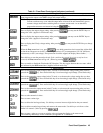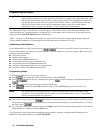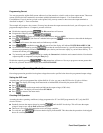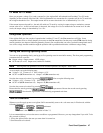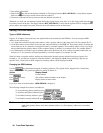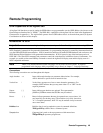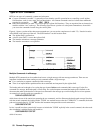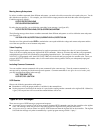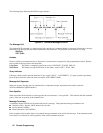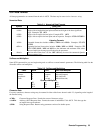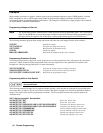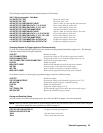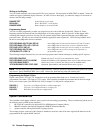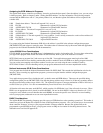
Remote Programming 51
Moving Among Subsystems
In order to combine commands from different subsystems, you need to be able to restore the active path to the root. You do
this with the root specifier (:). For example, you could clear the output protection and check the status of the Operation
Condition register as follows:
OUTPUT:PROTECTION:CLEAR
STATUS:OPERATION:CONDITION?
By using the root specifier, you could do the same thing in one message (see figure 6-2):
OUTPUT:PROTECTION:CLEAR;:STATUS:OPERATION:CONDITION?
The following message shows how to combine commands from different subsystems as well as within the same subsystem
(see figure 6-2):
VOLTAGE:LEVEL 60;PROTECTION 65;:CURRENT:LEVEL 4;PROTECTION ON
Note the use of the optional header LEVEL to maintain the correct path within the voltage and current subsystems and the
use of the root specifier to move between subsystems.
Value Coupling
Value coupling results when a command directed to send one parameter also changes the value of a second parameter.
There is no direct coupling among any Agilent SAS SCPI commands. However, be aware that until they are programmed,
uninitialized trigger levels will assume their corresponding immediate levels. For example, if a unit is powered up and
VOLT:LEV is programmed to 60, then VOLT:LEV:TRIG will also be 60 until you program it to another value. Once you
program VOLT:LEV:TRIG to another value, it will remain at that value regardless of how you subsequently reprogram
VOLT:LEVEL.
Including Common Commands
You can combine common commands with system commands in the same message. Treat the common command as a
message unit by separating it with the message unit separator. Common commands do not affect the active header path;
you may insert them anywhere in the message.
VOLT:TRIG 55;INIT;*TRG
OUTP OFF;*RCL 2;OUTP ON
SCPI Queries
Observe the following precautions with queries:
■ Remember to set up the proper number of variables for the returned data.
■ Set the program to read back all the results of a query before sending another command to the Agilent SAS. Otherwise,
a Query Interrupted error will occur and the unreturned data will be lost.
Types of SCPI Messages
There are two types of SCPI messages, program and response.
■ A program message consists of one or more properly formatted SCPI commands sent from the controller to the Agilent
SAS. The message, which may be sent at any time, requests the Agilent SAS to perform some action.
■ A response message consists of data in a specific SCPI format sent from the Agilent SAS to the controller. The Agilent
SAS sends the message only when commanded by a special program message called a "query."



